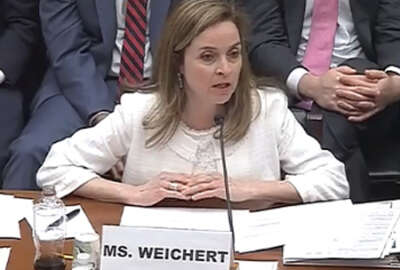
At the Secret Service, improving engagement starts with employees, and extends to their families
In a years-long quest to improve morale, the Secret Service has found recent investments in its workforce, and their employees' families, are starting to pay of...
It’s easy to write off an 11-point improvement on the 2018 Best Places to Work in the Federal Government rankings as one that only a small agency component like the Secret Service could achieve in a year.
With an engagement score at 44 points, the agency isn’t exactly a threat to NASA’s number one spot on the rankings.
But the Secret Service is deploying an employee engagement strategy that, after five years of slow, steady progress, is beginning to resonate with its workforce. And it’s one that human capital leaders at the Department of Homeland Security have said could serve as a model as DHS continues its own attempts to improve morale.
For the Secret Service, improvements came after leadership secured more funding to invest in its workforce — and made a concerted effort to solicit and listen to feedback from its employees and their families.
“We started an upward climb in terms of morale that really didn’t start to get reflected in any of the employee engagement public surveys until last year,” Susan Yarwood, the Secret Service’s chief human capital officer, said in an interview with Federal News Network. “We’re pretty happy about that, but we know we have a long way to go.”
Like a lot of agencies, the downturn for the Secret Service began in 2013 with sequestration. The agency’s employee engagement score on the “Best Places to Work” rankings fell from 62.3 points in 2012 to 52.8 points in 2013, according to the Partnership for Public Service.
“We stopped hiring so that we could continue on our no-fail mission,” Yarwood said. “That resulted in increased forced overtime. It resulted in longer shifts. Those kinds of things lead to, obviously, attrition. We’ve always had an inconvenient lifestyle, [but] people started voting with their feet and saying ‘this is not only inconvenient; it’s unsustainable.”
Overtime for Secret Service agents had reached an all time high. And more than 1,000 of the agency’s employees were never compensated for the hours they spent working in 2016, because total overtimes hours exceeded the statutory pay cap.
By 2016, engagement reached a new low at just 32.8 points, according to the Partnership.
“I got in and saw this tremendously dedicated, passionate, no-fail workforce that loved working there,” said Yarwood, who arrived at the agency shortly after the 2016 presidential campaign. “A couple weeks later, the Best Places to Work [rankings] came out, and we were on the bottom, if not close to the bottom. Personally, I was absolutely stunned, because what I was seeing in the numbers and in the ratings did not match what I was seeing and feeling.”
Top Secret Service leadership, who saw their agents pressed to the limit with long shifts and overtime that extended well past the statutory pay caps, appealed to lawmakers for help.
Congress eventually gave the agency both the authority and the funding to pay over the statutory cap, which Yarwood said the Secret Service will use through the end of the next presidential campaign.
By 2015, the Secret Service started receiving enough in appropriations to begin hiring more people and incentivizing others to stay with the agency, Yarwood said.
Congress gave the agency about $10 million in 2016 to begin a variety of retention incentives and other programs that, based on employee feedback, the Secret Service started or strengthened in an effort to improve engagement.
The Secret Service this past year formed an advisory council with agency leadership and employees of all grades. The council helped dissect the results from the Federal Employee Viewpoint Survey and developed an improvement and communication strategy.
Former Secret Service Directors Joseph Clancy and Randolph Alles, who had always spent time in the field with their agents, helped solicit feedback from the field.
“They spend a lot of time walking around the grounds of the White House [and] at something huge like the United Nations General Assembly,” Yarwood said. “They’re up there with the troops, and we’re asking the questions, ‘What do you need? What’s working? What’s not working?'”
Secret Service offers retention incentives, tuition reimbursement
In soliciting feedback from its employees, the Secret Service heard common concerns from the agents in the field.
The rising costs of child care, for example, was a challenge for many agents, Yarwood said. The agency developed a child care subsidy program to offer some relief.
“We can directly pay child care providers that are accredited … and take some of the burden off of the employees not only for the cost, but also that allows those spouses who aren’t really able to continue their careers as they’re moving around, it gives them a little freedom to invest in themselves as well,” she said.
Tuition reimbursement is another important program for the agency. And about 600 Secret Service employees have participated in the agency’s student loan repayment program over the last three years, Yarwood said. Those employees have committed to work for the agency for three years.
Retention bonuses for the agency’s uniformed division officers and senior agents are also paying dividends, Yarwood said.
Today, about one-third of the Secret Service workforce participates in the agency’s child care subsidy or tuition reimbursement programs or has received a retention incentive of some kind, Yarwood said.
In addition, the Secret Service has started a relatively new bonus program for its cybersecurity professionals. Cyber specialists, based on their level of training and the number and complexity of cases they’re working, can earn a certain percentage of their salaries as a bonus, Yarwood said.
“Attrition is starting to go down, and we can see that morale is picking up as well,” Yarwood said. “But it’s not just about money and those kinds of bonuses. It’s really about the family life. It’s [about] the family support and whether or not you’re getting days off [and] whether or not you’re working eight hour shifts versus 12-hour shifts.”
Home, family life impacts engagement at work
For the Secret Service, improving employee engagement isn’t only about boosting the morale of its workforce in the office and in the field. Instead, the agency sees a responsibility to engage the families and spouses of its Secret Service agents, many of whom must upend their lives when the next deployment comes.
Yarwood, a military spouse herself, understands how the Secret Service lifestyle can be hard on the agents and their families.
“I’ve never seen more family support than I’ve seen at the Secret Service,” said Yarwood, who came to the agency after years at the Defense Department. “The spouses are incredibly communicative with each other. If an agent … has to drop everything and deploy for an unexpected event, the agents and uniformed officers that are not going will immediately ban behind and make sure the family gets taken care of. And that goes across not just work related issues, it goes across illnesses, it goes across some of the family events that every employee might have.”
The Secret Service already has an active chaplain program and a popular employee assistance program, which offers financial assistance workshops for employees and their families. Now the agency is examining how it can secure employment priorities and other kinds of support for agents and their spouses and partners, especially those who move frequently for the job, Yarwood said.
The Secret Service is also working with the Department of Homeland Security to help its employees build better personal partnerships.
“By partnerships, I mean anything from marriages to cohabitation, every kind of partnership,” Yarwood said. “Right now we’re looking at how do we invest some of those strong relationship skills building into an organization that is culturally very secretive about any personal or organizational problems. That’s not an easy thing to do.”
Like many DHS components, the Secret Service also experienced a recent change in leadership, but Yarwood said the agency’s employees “didn’t miss a beat” during the transition. The employees thanked Alles, who served as the agency’s director for about two years, when he left the Secret Service in May.
James Murray, a longtime career Secret Service agent with decades of field experience, has been sworn in as the agency’s new director.
“He cares deeply about the employees and understands that taking care of the employees is how we get our mission done,” Yarwood said of Murray. “So [it’s] business as usual. Get the job done, and make sure we’re taking care of our people in the process. In fact, [Murray] talks about mission first, people always.”
Copyright © 2024 Federal News Network. All rights reserved. This website is not intended for users located within the European Economic Area.
Nicole Ogrysko is a reporter for Federal News Network focusing on the federal workforce and federal pay and benefits.
Follow @nogryskoWFED





